#world monuments fund's list of 100 most endangered sites.
Photo

prior
Larabanga Mosque: the Mecca of West Africa
Built in the Sudano-Sahelian architectural style, Larabanga Mosque is the oldest mosque in Ghana and one of the oldest mosques in West Africa. This mud-brick mosque takes its name from the village where it is located, but it is also referred to as the “Mecca of West Africa.” Larabanga Mosque dates back to 1421, and today, it is on the World Monuments Fund’s List of 100 Most Endangered Sites.

muslimlandmarks
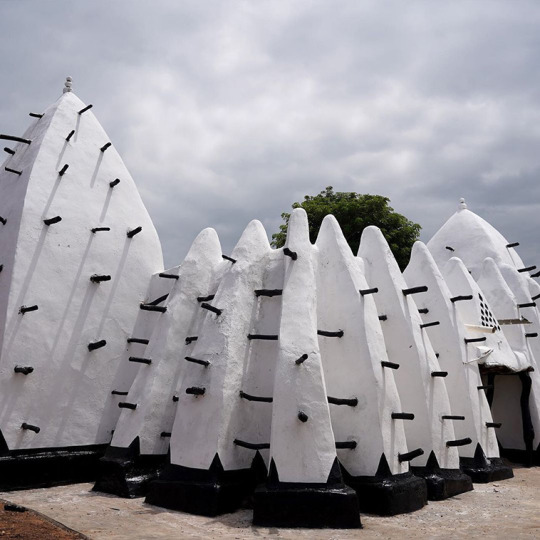
nav_s_baerbelmueller
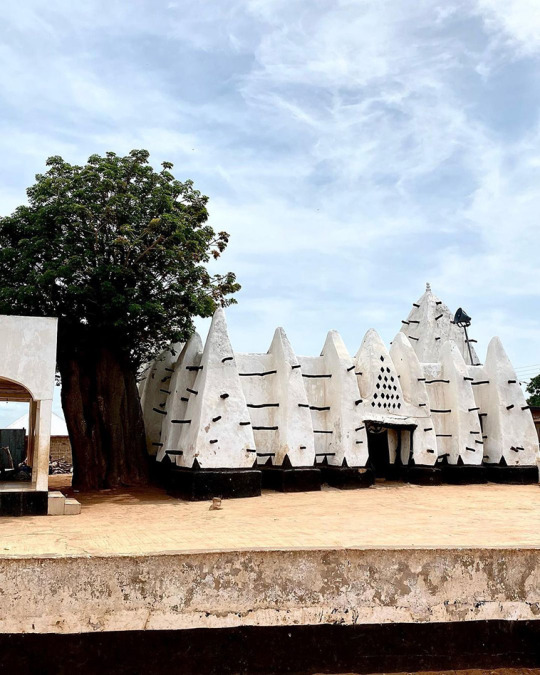
boatengabrielle
#larabanga mosque#mosque#religion#architecture#west africa#sudano-sahelian architectural style#ghana#mecca of west africa#world monuments fund's list of 100 most endangered sites.#prior#photographer#instagram#muslimlandmarks#nav_s_baerbelmueller#boatengabrielle
3 notes
·
View notes
Photo
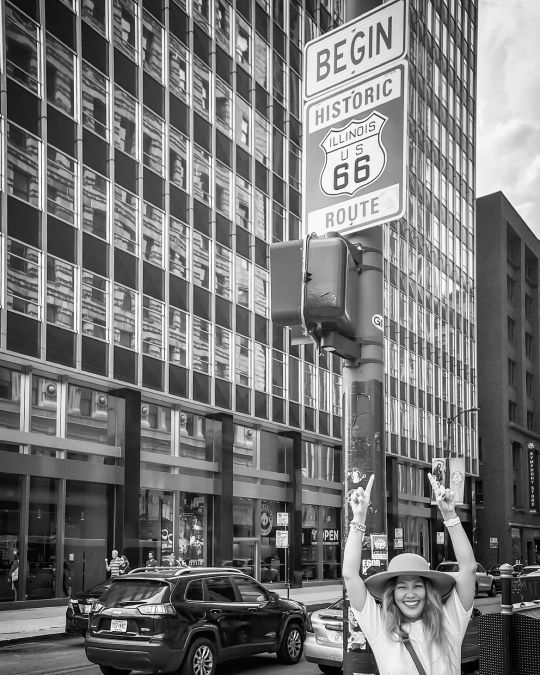
“Route 66 had its official beginnings in 1926 when the Bureau of Public Roads launched the nation’s first Federal highway system. Like other highways in the system, the path of Route 66 was a cobbling together of existing local, State, and national roads. The highway quickly became a popular route because of the active promotion of the U.S 66 Highway Association, which advertised it as “the shortest, best and most scenic route from Chicago through St. Louis to Los Angeles. In 2008, the significance of Route 66 and the importance of preserving it were again recognized when the World Monuments Fund listed Route 66 on the Watch List of 100 Most Endangered Sites. The Watch calls international attention to threatened cultural sites around the world, and seeks to build capacities and constituencies for the long-term, sustainable protection of those sites. As a result of this listing, World Monuments Fund has partnered with American Express through its Sustainable Tourism Initiative to provide funding to support Route 66 projects, including an Economic Impact Study of Historic Preservation and Tourism, this Route 66 National Park Service Discover Our Shared Heritage Travel Itinerary, and the formation of a national, collaborating nonprofit organization known as the Route 66 Road Ahead Partnership. There is a spirit, a feeling that resides along this highway. The spirit of Route 66 lives in the people and their stories, the views and buildings, and travelers' perceptions of the highway. Today’s travelers can still experience a remarkable journey traveling through time on Route 66.” (*Resource: @nationalparkservice website) Guess what road trip I’ll be doing next summer!!! ••• Tag someone you know who’s done it! ••• 🛣 📸 @adventureisneverfaraway (at Start of Route 66) https://www.instagram.com/p/CUyUSVdMxm5/?utm_medium=tumblr
0 notes
Photo
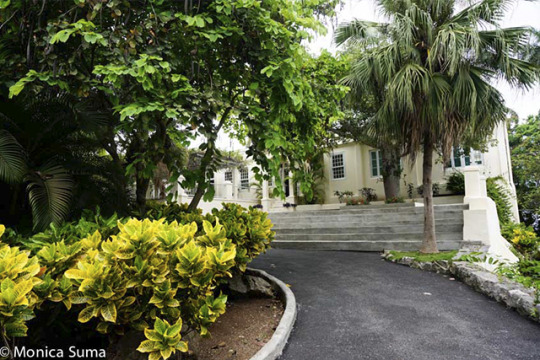
Finca Vigia & Ernest Hemingway
Ernest Hemingway, the American novelist and journalist, fell in love with Cuba the moment he stepped foot on shore. He built his house there, enjoyed many a day fishing Marlin, wrote some of this most celebrated novels on the island, and formed an everlasting bond with the Cuban people. Hemingway left quite a legacy in his beloved country after his death. To this day, his image can be seen throughout Cuba just as much as the country’s own historic icons and leaders.
In 1928, Hemingway set sail from his home in Key West on a voyage towards Spain. He took with him his wife Pauline, their two sons and Pauline’s sister Jinny. Partway through their trip they needed to make a layover in Havana, Cuba, this was Hemingway’s first time seeing this colourful country. The family stayed in the Hotel Ambos Mundos for three days. Which was more than enough time for Hemingway to fall madly in love with Cuba.
However, it was another 4 years later that Hemingway stepped foot on the island again. In 1932, Hemingway brought two of his close friends to Cuba on the legendary ship “Anita”, to join in the annual Marlin run. Also onboard was Hemingway’s hired help and Cuban friend Carlos Gutierrez. Carlos was a master Marlin fisherman, and he taught Hemingway how to correctly rig the baits to catch fish at different depths.
Hemingway loved the experience so much, he purchased a new boat, the “Pilar”, and came back the very next year with Carlos Gutierrez to fish in the Marlin run. In 1933 Hemingway wrote an article for Esquire Magazine entitled “Marlin off the Morro: A Cuban letter”, talking all about the things he has experienced during this time.
Over the next few years, Hemingway and his wife Pauline began to have marital problems, and in 1940, following his earlier divorce, Hemingway moved to Cuba with his new wife Martha. The two purchased a house just outside of Cuba’s capital Havana for an impressive $12,500 USD. They named the grand property Finca Vigia, or ‘lookout house’ and lived there happily with their many cats for 20 years. During his time at Finca Vigia, Hemingway wrote two of his greatest novels, For Whom The Bell Tolls and The Old Man And The Sea.
Hemingway became a celebrated member of the Cuban society as he stayed put in his home long after the relations between Cuba and the United States began to crumble. He fished almost daily from his favourite boat the “Pilar”, he hung out with the locals in his favourite bars in Havana, La Bodeguita del Medio and La Floridita, and he reported on the war in Cuba with a totally unbiased view. As a final act of alliance to the Cubans, Hemingway requested the Cuban government help him repurpose his precious “Pilar” as a fighting ship, so he could ambush German submarines off the coast of Cuba.
Memory of Ernest Hemingway
In 1961, after Hemingway’s death, his wonderful home was taken over by the Cuban government, despite the refusal of his wife Mary. Not long after this repossession, the government quickly forgot about Hemingway’s beloved home, and the property quickly fell into ruin. However, in recent years, the house has been taken in and restored by the Cubans, and can now be visited by the public throughout the year. Here you can see Hemingway’s many fishing memorabilia, hunting trophies, personal artefacts and his grand library. The home/museum is on both the World Monuments Fund list of the 100 Most Endangered Sites, and The National Trust for Historic Preservation’s 11 Most Endangered Places list.
0 notes
Photo
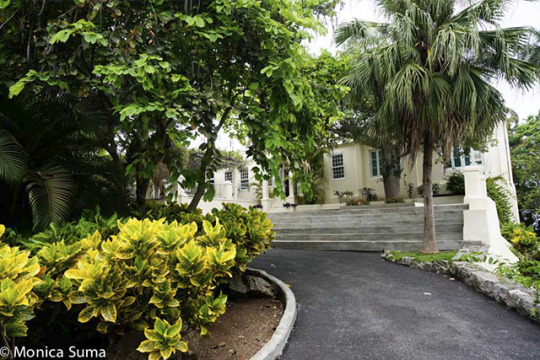
Finca Vigia & Ernest Hemingway
Ernest Hemingway, the American novelist and journalist, fell in love with Cuba the moment he stepped foot on shore. He built his house there, enjoyed many a day fishing Marlin, wrote some of this most celebrated novels on the island, and formed an everlasting bond with the Cuban people. Hemingway left quite a legacy in his beloved country after his death. To this day, his image can be seen throughout Cuba just as much as the country’s own historic icons and leaders.
In 1928, Hemingway set sail from his home in Key West on a voyage towards Spain. He took with him his wife Pauline, their two sons and Pauline’s sister Jinny. Partway through their trip they needed to make a layover in Havana, Cuba, this was Hemingway’s first time seeing this colourful country. The family stayed in the Hotel Ambos Mundos for three days. Which was more than enough time for Hemingway to fall madly in love with Cuba.
However, it was another 4 years later that Hemingway stepped foot on the island again. In 1932, Hemingway brought two of his close friends to Cuba on the legendary ship “Anita”, to join in the annual Marlin run. Also onboard was Hemingway’s hired help and Cuban friend Carlos Gutierrez. Carlos was a master Marlin fisherman, and he taught Hemingway how to correctly rig the baits to catch fish at different depths.
Hemingway loved the experience so much, he purchased a new boat, the “Pilar”, and came back the very next year with Carlos Gutierrez to fish in the Marlin run. In 1933 Hemingway wrote an article for Esquire Magazine entitled “Marlin off the Morro: A Cuban letter”, talking all about the things he has experienced during this time.
Over the next few years, Hemingway and his wife Pauline began to have marital problems, and in 1940, following his earlier divorce, Hemingway moved to Cuba with his new wife Martha. The two purchased a house just outside of Cuba’s capital Havana for an impressive $12,500 USD. They named the grand property Finca Vigia, or ‘lookout house’ and lived there happily with their many cats for 20 years. During his time at Finca Vigia, Hemingway wrote two of his greatest novels, For Whom The Bell Tolls and The Old Man And The Sea.
Hemingway became a celebrated member of the Cuban society as he stayed put in his home long after the relations between Cuba and the United States began to crumble. He fished almost daily from his favourite boat the “Pilar”, he hung out with the locals in his favourite bars in Havana, La Bodeguita del Medio and La Floridita, and he reported on the war in Cuba with a totally unbiased view. As a final act of alliance to the Cubans, Hemingway requested the Cuban government help him repurpose his precious “Pilar” as a fighting ship, so he could ambush German submarines off the coast of Cuba.
Memory of Ernest Hemingway
In 1961, after Hemingway’s death, his wonderful home was taken over by the Cuban government, despite the refusal of his wife Mary. Not long after this repossession, the government quickly forgot about Hemingway’s beloved home, and the property quickly fell into ruin. However, in recent years, the house has been taken in and restored by the Cubans, and can now be visited by the public throughout the year. Here you can see Hemingway’s many fishing memorabilia, hunting trophies, personal artefacts and his grand library. The home/museum is on both the World Monuments Fund list of the 100 Most Endangered Sites, and The National Trust for Historic Preservation’s 11 Most Endangered Places list.
0 notes
Photo

Finca Vigia & Ernest Hemingway
Ernest Hemingway, the American novelist and journalist, fell in love with Cuba the moment he stepped foot on shore. He built his house there, enjoyed many a day fishing Marlin, wrote some of this most celebrated novels on the island, and formed an everlasting bond with the Cuban people. Hemingway left quite a legacy in his beloved country after his death. To this day, his image can be seen throughout Cuba just as much as the country’s own historic icons and leaders.
In 1928, Hemingway set sail from his home in Key West on a voyage towards Spain. He took with him his wife Pauline, their two sons and Pauline’s sister Jinny. Partway through their trip they needed to make a layover in Havana, Cuba, this was Hemingway’s first time seeing this colourful country. The family stayed in the Hotel Ambos Mundos for three days. Which was more than enough time for Hemingway to fall madly in love with Cuba.
However, it was another 4 years later that Hemingway stepped foot on the island again. In 1932, Hemingway brought two of his close friends to Cuba on the legendary ship “Anita”, to join in the annual Marlin run. Also onboard was Hemingway’s hired help and Cuban friend Carlos Gutierrez. Carlos was a master Marlin fisherman, and he taught Hemingway how to correctly rig the baits to catch fish at different depths.
Hemingway loved the experience so much, he purchased a new boat, the “Pilar”, and came back the very next year with Carlos Gutierrez to fish in the Marlin run. In 1933 Hemingway wrote an article for Esquire Magazine entitled “Marlin off the Morro: A Cuban letter”, talking all about the things he has experienced during this time.
Over the next few years, Hemingway and his wife Pauline began to have marital problems, and in 1940, following his earlier divorce, Hemingway moved to Cuba with his new wife Martha. The two purchased a house just outside of Cuba’s capital Havana for an impressive $12,500 USD. They named the grand property Finca Vigia, or ‘lookout house’ and lived there happily with their many cats for 20 years. During his time at Finca Vigia, Hemingway wrote two of his greatest novels, For Whom The Bell Tolls and The Old Man And The Sea.
Hemingway became a celebrated member of the Cuban society as he stayed put in his home long after the relations between Cuba and the United States began to crumble. He fished almost daily from his favourite boat the “Pilar”, he hung out with the locals in his favourite bars in Havana, La Bodeguita del Medio and La Floridita, and he reported on the war in Cuba with a totally unbiased view. As a final act of alliance to the Cubans, Hemingway requested the Cuban government help him repurpose his precious “Pilar” as a fighting ship, so he could ambush German submarines off the coast of Cuba.
Memory of Ernest Hemingway
In 1961, after Hemingway’s death, his wonderful home was taken over by the Cuban government, despite the refusal of his wife Mary. Not long after this repossession, the government quickly forgot about Hemingway’s beloved home, and the property quickly fell into ruin. However, in recent years, the house has been taken in and restored by the Cubans, and can now be visited by the public throughout the year. Here you can see Hemingway’s many fishing memorabilia, hunting trophies, personal artefacts and his grand library. The home/museum is on both the World Monuments Fund list of the 100 Most Endangered Sites, and The National Trust for Historic Preservation’s 11 Most Endangered Places list.
0 notes
Photo
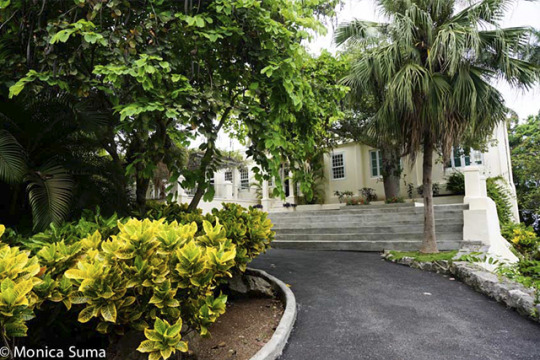
Finca Vigia & Ernest Hemingway
Ernest Hemingway, the American novelist and journalist, fell in love with Cuba the moment he stepped foot on shore. He built his house there, enjoyed many a day fishing Marlin, wrote some of this most celebrated novels on the island, and formed an everlasting bond with the Cuban people. Hemingway left quite a legacy in his beloved country after his death. To this day, his image can be seen throughout Cuba just as much as the country’s own historic icons and leaders.
In 1928, Hemingway set sail from his home in Key West on a voyage towards Spain. He took with him his wife Pauline, their two sons and Pauline’s sister Jinny. Partway through their trip they needed to make a layover in Havana, Cuba, this was Hemingway’s first time seeing this colourful country. The family stayed in the Hotel Ambos Mundos for three days. Which was more than enough time for Hemingway to fall madly in love with Cuba.
However, it was another 4 years later that Hemingway stepped foot on the island again. In 1932, Hemingway brought two of his close friends to Cuba on the legendary ship “Anita”, to join in the annual Marlin run. Also onboard was Hemingway’s hired help and Cuban friend Carlos Gutierrez. Carlos was a master Marlin fisherman, and he taught Hemingway how to correctly rig the baits to catch fish at different depths.
Hemingway loved the experience so much, he purchased a new boat, the “Pilar”, and came back the very next year with Carlos Gutierrez to fish in the Marlin run. In 1933 Hemingway wrote an article for Esquire Magazine entitled “Marlin off the Morro: A Cuban letter”, talking all about the things he has experienced during this time.
Over the next few years, Hemingway and his wife Pauline began to have marital problems, and in 1940, following his earlier divorce, Hemingway moved to Cuba with his new wife Martha. The two purchased a house just outside of Cuba’s capital Havana for an impressive $12,500 USD. They named the grand property Finca Vigia, or ‘lookout house’ and lived there happily with their many cats for 20 years. During his time at Finca Vigia, Hemingway wrote two of his greatest novels, For Whom The Bell Tolls and The Old Man And The Sea.
Hemingway became a celebrated member of the Cuban society as he stayed put in his home long after the relations between Cuba and the United States began to crumble. He fished almost daily from his favourite boat the “Pilar”, he hung out with the locals in his favourite bars in Havana, La Bodeguita del Medio and La Floridita, and he reported on the war in Cuba with a totally unbiased view. As a final act of alliance to the Cubans, Hemingway requested the Cuban government help him repurpose his precious “Pilar” as a fighting ship, so he could ambush German submarines off the coast of Cuba.
Memory of Ernest Hemingway
In 1961, after Hemingway’s death, his wonderful home was taken over by the Cuban government, despite the refusal of his wife Mary. Not long after this repossession, the government quickly forgot about Hemingway’s beloved home, and the property quickly fell into ruin. However, in recent years, the house has been taken in and restored by the Cubans, and can now be visited by the public throughout the year. Here you can see Hemingway’s many fishing memorabilia, hunting trophies, personal artefacts and his grand library. The home/museum is on both the World Monuments Fund list of the 100 Most Endangered Sites, and The National Trust for Historic Preservation’s 11 Most Endangered Places list.
0 notes
Photo

Finca Vigia & Ernest Hemingway
Ernest Hemingway, the American novelist and journalist, fell in love with Cuba the moment he stepped foot on shore. He built his house there, enjoyed many a day fishing Marlin, wrote some of this most celebrated novels on the island, and formed an everlasting bond with the Cuban people. Hemingway left quite a legacy in his beloved country after his death. To this day, his image can be seen throughout Cuba just as much as the country’s own historic icons and leaders.
In 1928, Hemingway set sail from his home in Key West on a voyage towards Spain. He took with him his wife Pauline, their two sons and Pauline’s sister Jinny. Partway through their trip they needed to make a layover in Havana, Cuba, this was Hemingway’s first time seeing this colourful country. The family stayed in the Hotel Ambos Mundos for three days. Which was more than enough time for Hemingway to fall madly in love with Cuba.
However, it was another 4 years later that Hemingway stepped foot on the island again. In 1932, Hemingway brought two of his close friends to Cuba on the legendary ship “Anita”, to join in the annual Marlin run. Also onboard was Hemingway’s hired help and Cuban friend Carlos Gutierrez. Carlos was a master Marlin fisherman, and he taught Hemingway how to correctly rig the baits to catch fish at different depths.
Hemingway loved the experience so much, he purchased a new boat, the “Pilar”, and came back the very next year with Carlos Gutierrez to fish in the Marlin run. In 1933 Hemingway wrote an article for Esquire Magazine entitled “Marlin off the Morro: A Cuban letter”, talking all about the things he has experienced during this time.
Over the next few years, Hemingway and his wife Pauline began to have marital problems, and in 1940, following his earlier divorce, Hemingway moved to Cuba with his new wife Martha. The two purchased a house just outside of Cuba’s capital Havana for an impressive $12,500 USD. They named the grand property Finca Vigia, or ‘lookout house’ and lived there happily with their many cats for 20 years. During his time at Finca Vigia, Hemingway wrote two of his greatest novels, For Whom The Bell Tolls and The Old Man And The Sea.
Hemingway became a celebrated member of the Cuban society as he stayed put in his home long after the relations between Cuba and the United States began to crumble. He fished almost daily from his favourite boat the “Pilar”, he hung out with the locals in his favourite bars in Havana, La Bodeguita del Medio and La Floridita, and he reported on the war in Cuba with a totally unbiased view. As a final act of alliance to the Cubans, Hemingway requested the Cuban government help him repurpose his precious “Pilar” as a fighting ship, so he could ambush German submarines off the coast of Cuba.
Memory of Ernest Hemingway
In 1961, after Hemingway’s death, his wonderful home was taken over by the Cuban government, despite the refusal of his wife Mary. Not long after this repossession, the government quickly forgot about Hemingway’s beloved home, and the property quickly fell into ruin. However, in recent years, the house has been taken in and restored by the Cubans, and can now be visited by the public throughout the year. Here you can see Hemingway’s many fishing memorabilia, hunting trophies, personal artefacts and his grand library. The home/museum is on both the World Monuments Fund list of the 100 Most Endangered Sites, and The National Trust for Historic Preservation’s 11 Most Endangered Places list.
0 notes
Photo
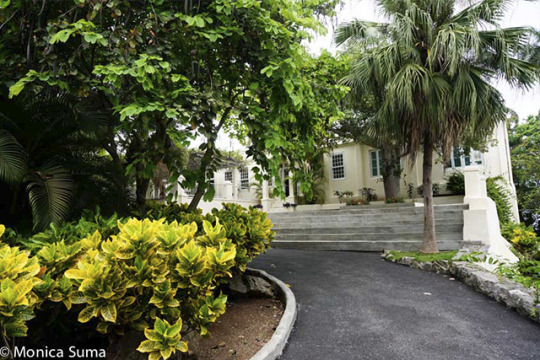
Finca Vigia & Ernest Hemingway
Ernest Hemingway, the American novelist and journalist, fell in love with Cuba the moment he stepped foot on shore. He built his house there, enjoyed many a day fishing Marlin, wrote some of this most celebrated novels on the island, and formed an everlasting bond with the Cuban people. Hemingway left quite a legacy in his beloved country after his death. To this day, his image can be seen throughout Cuba just as much as the country’s own historic icons and leaders.
In 1928, Hemingway set sail from his home in Key West on a voyage towards Spain. He took with him his wife Pauline, their two sons and Pauline’s sister Jinny. Partway through their trip they needed to make a layover in Havana, Cuba, this was Hemingway’s first time seeing this colourful country. The family stayed in the Hotel Ambos Mundos for three days. Which was more than enough time for Hemingway to fall madly in love with Cuba.
However, it was another 4 years later that Hemingway stepped foot on the island again. In 1932, Hemingway brought two of his close friends to Cuba on the legendary ship “Anita”, to join in the annual Marlin run. Also onboard was Hemingway’s hired help and Cuban friend Carlos Gutierrez. Carlos was a master Marlin fisherman, and he taught Hemingway how to correctly rig the baits to catch fish at different depths.
Hemingway loved the experience so much, he purchased a new boat, the “Pilar”, and came back the very next year with Carlos Gutierrez to fish in the Marlin run. In 1933 Hemingway wrote an article for Esquire Magazine entitled “Marlin off the Morro: A Cuban letter”, talking all about the things he has experienced during this time.
Over the next few years, Hemingway and his wife Pauline began to have marital problems, and in 1940, following his earlier divorce, Hemingway moved to Cuba with his new wife Martha. The two purchased a house just outside of Cuba’s capital Havana for an impressive $12,500 USD. They named the grand property Finca Vigia, or ‘lookout house’ and lived there happily with their many cats for 20 years. During his time at Finca Vigia, Hemingway wrote two of his greatest novels, For Whom The Bell Tolls and The Old Man And The Sea.
Hemingway became a celebrated member of the Cuban society as he stayed put in his home long after the relations between Cuba and the United States began to crumble. He fished almost daily from his favourite boat the “Pilar”, he hung out with the locals in his favourite bars in Havana, La Bodeguita del Medio and La Floridita, and he reported on the war in Cuba with a totally unbiased view. As a final act of alliance to the Cubans, Hemingway requested the Cuban government help him repurpose his precious “Pilar” as a fighting ship, so he could ambush German submarines off the coast of Cuba.
Memory of Ernest Hemingway
In 1961, after Hemingway’s death, his wonderful home was taken over by the Cuban government, despite the refusal of his wife Mary. Not long after this repossession, the government quickly forgot about Hemingway’s beloved home, and the property quickly fell into ruin. However, in recent years, the house has been taken in and restored by the Cubans, and can now be visited by the public throughout the year. Here you can see Hemingway’s many fishing memorabilia, hunting trophies, personal artefacts and his grand library. The home/museum is on both the World Monuments Fund list of the 100 Most Endangered Sites, and The National Trust for Historic Preservation’s 11 Most Endangered Places list.
0 notes
Photo
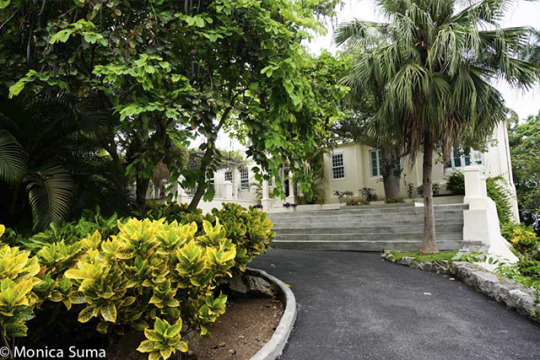
Finca Vigia & Ernest Hemingway
Ernest Hemingway, the American novelist and journalist, fell in love with Cuba the moment he stepped foot on shore. He built his house there, enjoyed many a day fishing Marlin, wrote some of this most celebrated novels on the island, and formed an everlasting bond with the Cuban people. Hemingway left quite a legacy in his beloved country after his death. To this day, his image can be seen throughout Cuba just as much as the country’s own historic icons and leaders.
In 1928, Hemingway set sail from his home in Key West on a voyage towards Spain. He took with him his wife Pauline, their two sons and Pauline’s sister Jinny. Partway through their trip they needed to make a layover in Havana, Cuba, this was Hemingway’s first time seeing this colourful country. The family stayed in the Hotel Ambos Mundos for three days. Which was more than enough time for Hemingway to fall madly in love with Cuba.
However, it was another 4 years later that Hemingway stepped foot on the island again. In 1932, Hemingway brought two of his close friends to Cuba on the legendary ship “Anita”, to join in the annual Marlin run. Also onboard was Hemingway’s hired help and Cuban friend Carlos Gutierrez. Carlos was a master Marlin fisherman, and he taught Hemingway how to correctly rig the baits to catch fish at different depths.
Hemingway loved the experience so much, he purchased a new boat, the “Pilar”, and came back the very next year with Carlos Gutierrez to fish in the Marlin run. In 1933 Hemingway wrote an article for Esquire Magazine entitled “Marlin off the Morro: A Cuban letter”, talking all about the things he has experienced during this time.
Over the next few years, Hemingway and his wife Pauline began to have marital problems, and in 1940, following his earlier divorce, Hemingway moved to Cuba with his new wife Martha. The two purchased a house just outside of Cuba’s capital Havana for an impressive $12,500 USD. They named the grand property Finca Vigia, or ‘lookout house’ and lived there happily with their many cats for 20 years. During his time at Finca Vigia, Hemingway wrote two of his greatest novels, For Whom The Bell Tolls and The Old Man And The Sea.
Hemingway became a celebrated member of the Cuban society as he stayed put in his home long after the relations between Cuba and the United States began to crumble. He fished almost daily from his favourite boat the “Pilar”, he hung out with the locals in his favourite bars in Havana, La Bodeguita del Medio and La Floridita, and he reported on the war in Cuba with a totally unbiased view. As a final act of alliance to the Cubans, Hemingway requested the Cuban government help him repurpose his precious “Pilar” as a fighting ship, so he could ambush German submarines off the coast of Cuba.
Memory of Ernest Hemingway
In 1961, after Hemingway’s death, his wonderful home was taken over by the Cuban government, despite the refusal of his wife Mary. Not long after this repossession, the government quickly forgot about Hemingway’s beloved home, and the property quickly fell into ruin. However, in recent years, the house has been taken in and restored by the Cubans, and can now be visited by the public throughout the year. Here you can see Hemingway’s many fishing memorabilia, hunting trophies, personal artefacts and his grand library. The home/museum is on both the World Monuments Fund list of the 100 Most Endangered Sites, and The National Trust for Historic Preservation’s 11 Most Endangered Places list.
0 notes
Photo
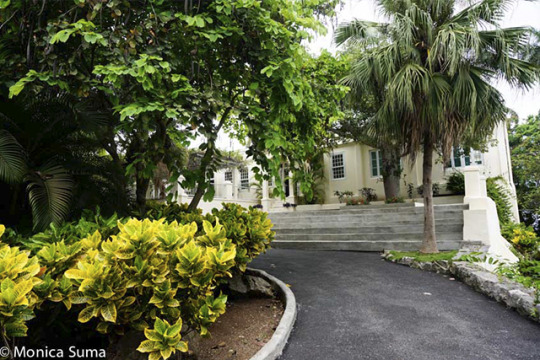
Finca Vigia & Ernest Hemingway
Ernest Hemingway, the American novelist and journalist, fell in love with Cuba the moment he stepped foot on shore. He built his house there, enjoyed many a day fishing Marlin, wrote some of this most celebrated novels on the island, and formed an everlasting bond with the Cuban people. Hemingway left quite a legacy in his beloved country after his death. To this day, his image can be seen throughout Cuba just as much as the country’s own historic icons and leaders.
In 1928, Hemingway set sail from his home in Key West on a voyage towards Spain. He took with him his wife Pauline, their two sons and Pauline’s sister Jinny. Partway through their trip they needed to make a layover in Havana, Cuba, this was Hemingway’s first time seeing this colourful country. The family stayed in the Hotel Ambos Mundos for three days. Which was more than enough time for Hemingway to fall madly in love with Cuba.
However, it was another 4 years later that Hemingway stepped foot on the island again. In 1932, Hemingway brought two of his close friends to Cuba on the legendary ship “Anita”, to join in the annual Marlin run. Also onboard was Hemingway’s hired help and Cuban friend Carlos Gutierrez. Carlos was a master Marlin fisherman, and he taught Hemingway how to correctly rig the baits to catch fish at different depths.
Hemingway loved the experience so much, he purchased a new boat, the “Pilar”, and came back the very next year with Carlos Gutierrez to fish in the Marlin run. In 1933 Hemingway wrote an article for Esquire Magazine entitled “Marlin off the Morro: A Cuban letter”, talking all about the things he has experienced during this time.
Over the next few years, Hemingway and his wife Pauline began to have marital problems, and in 1940, following his earlier divorce, Hemingway moved to Cuba with his new wife Martha. The two purchased a house just outside of Cuba’s capital Havana for an impressive $12,500 USD. They named the grand property Finca Vigia, or ‘lookout house’ and lived there happily with their many cats for 20 years. During his time at Finca Vigia, Hemingway wrote two of his greatest novels, For Whom The Bell Tolls and The Old Man And The Sea.
Hemingway became a celebrated member of the Cuban society as he stayed put in his home long after the relations between Cuba and the United States began to crumble. He fished almost daily from his favourite boat the “Pilar”, he hung out with the locals in his favourite bars in Havana, La Bodeguita del Medio and La Floridita, and he reported on the war in Cuba with a totally unbiased view. As a final act of alliance to the Cubans, Hemingway requested the Cuban government help him repurpose his precious “Pilar” as a fighting ship, so he could ambush German submarines off the coast of Cuba.
Memory of Ernest Hemingway
In 1961, after Hemingway’s death, his wonderful home was taken over by the Cuban government, despite the refusal of his wife Mary. Not long after this repossession, the government quickly forgot about Hemingway’s beloved home, and the property quickly fell into ruin. However, in recent years, the house has been taken in and restored by the Cubans, and can now be visited by the public throughout the year. Here you can see Hemingway’s many fishing memorabilia, hunting trophies, personal artefacts and his grand library. The home/museum is on both the World Monuments Fund list of the 100 Most Endangered Sites, and The National Trust for Historic Preservation’s 11 Most Endangered Places list.
0 notes
Photo
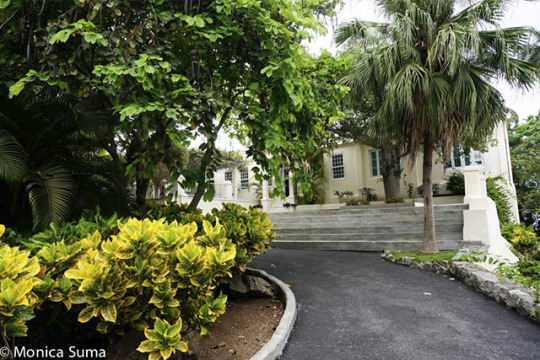
Finca Vigia & Ernest Hemingway
Ernest Hemingway, the American novelist and journalist, fell in love with Cuba the moment he stepped foot on shore. He built his house there, enjoyed many a day fishing Marlin, wrote some of this most celebrated novels on the island, and formed an everlasting bond with the Cuban people. Hemingway left quite a legacy in his beloved country after his death. To this day, his image can be seen throughout Cuba just as much as the country’s own historic icons and leaders.
In 1928, Hemingway set sail from his home in Key West on a voyage towards Spain. He took with him his wife Pauline, their two sons and Pauline’s sister Jinny. Partway through their trip they needed to make a layover in Havana, Cuba, this was Hemingway’s first time seeing this colourful country. The family stayed in the Hotel Ambos Mundos for three days. Which was more than enough time for Hemingway to fall madly in love with Cuba.
However, it was another 4 years later that Hemingway stepped foot on the island again. In 1932, Hemingway brought two of his close friends to Cuba on the legendary ship “Anita”, to join in the annual Marlin run. Also onboard was Hemingway’s hired help and Cuban friend Carlos Gutierrez. Carlos was a master Marlin fisherman, and he taught Hemingway how to correctly rig the baits to catch fish at different depths.
Hemingway loved the experience so much, he purchased a new boat, the “Pilar”, and came back the very next year with Carlos Gutierrez to fish in the Marlin run. In 1933 Hemingway wrote an article for Esquire Magazine entitled “Marlin off the Morro: A Cuban letter”, talking all about the things he has experienced during this time.
Over the next few years, Hemingway and his wife Pauline began to have marital problems, and in 1940, following his earlier divorce, Hemingway moved to Cuba with his new wife Martha. The two purchased a house just outside of Cuba’s capital Havana for an impressive $12,500 USD. They named the grand property Finca Vigia, or ‘lookout house’ and lived there happily with their many cats for 20 years. During his time at Finca Vigia, Hemingway wrote two of his greatest novels, For Whom The Bell Tolls and The Old Man And The Sea.
Hemingway became a celebrated member of the Cuban society as he stayed put in his home long after the relations between Cuba and the United States began to crumble. He fished almost daily from his favourite boat the “Pilar”, he hung out with the locals in his favourite bars in Havana, La Bodeguita del Medio and La Floridita, and he reported on the war in Cuba with a totally unbiased view. As a final act of alliance to the Cubans, Hemingway requested the Cuban government help him repurpose his precious “Pilar” as a fighting ship, so he could ambush German submarines off the coast of Cuba.
Memory of Ernest Hemingway
In 1961, after Hemingway’s death, his wonderful home was taken over by the Cuban government, despite the refusal of his wife Mary. Not long after this repossession, the government quickly forgot about Hemingway’s beloved home, and the property quickly fell into ruin. However, in recent years, the house has been taken in and restored by the Cubans, and can now be visited by the public throughout the year. Here you can see Hemingway’s many fishing memorabilia, hunting trophies, personal artefacts and his grand library. The home/museum is on both the World Monuments Fund list of the 100 Most Endangered Sites, and The National Trust for Historic Preservation’s 11 Most Endangered Places list.
0 notes
Photo
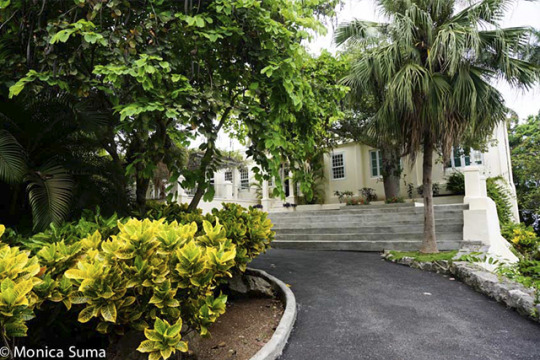
Finca Vigia & Ernest Hemingway
Ernest Hemingway, the American novelist and journalist, fell in love with Cuba the moment he stepped foot on shore. He built his house there, enjoyed many a day fishing Marlin, wrote some of this most celebrated novels on the island, and formed an everlasting bond with the Cuban people. Hemingway left quite a legacy in his beloved country after his death. To this day, his image can be seen throughout Cuba just as much as the country’s own historic icons and leaders.
In 1928, Hemingway set sail from his home in Key West on a voyage towards Spain. He took with him his wife Pauline, their two sons and Pauline’s sister Jinny. Partway through their trip they needed to make a layover in Havana, Cuba, this was Hemingway’s first time seeing this colourful country. The family stayed in the Hotel Ambos Mundos for three days. Which was more than enough time for Hemingway to fall madly in love with Cuba.
However, it was another 4 years later that Hemingway stepped foot on the island again. In 1932, Hemingway brought two of his close friends to Cuba on the legendary ship “Anita”, to join in the annual Marlin run. Also onboard was Hemingway’s hired help and Cuban friend Carlos Gutierrez. Carlos was a master Marlin fisherman, and he taught Hemingway how to correctly rig the baits to catch fish at different depths.
Hemingway loved the experience so much, he purchased a new boat, the “Pilar”, and came back the very next year with Carlos Gutierrez to fish in the Marlin run. In 1933 Hemingway wrote an article for Esquire Magazine entitled “Marlin off the Morro: A Cuban letter”, talking all about the things he has experienced during this time.
Over the next few years, Hemingway and his wife Pauline began to have marital problems, and in 1940, following his earlier divorce, Hemingway moved to Cuba with his new wife Martha. The two purchased a house just outside of Cuba’s capital Havana for an impressive $12,500 USD. They named the grand property Finca Vigia, or ‘lookout house’ and lived there happily with their many cats for 20 years. During his time at Finca Vigia, Hemingway wrote two of his greatest novels, For Whom The Bell Tolls and The Old Man And The Sea.
Hemingway became a celebrated member of the Cuban society as he stayed put in his home long after the relations between Cuba and the United States began to crumble. He fished almost daily from his favourite boat the “Pilar”, he hung out with the locals in his favourite bars in Havana, La Bodeguita del Medio and La Floridita, and he reported on the war in Cuba with a totally unbiased view. As a final act of alliance to the Cubans, Hemingway requested the Cuban government help him repurpose his precious “Pilar” as a fighting ship, so he could ambush German submarines off the coast of Cuba.
Memory of Ernest Hemingway
In 1961, after Hemingway’s death, his wonderful home was taken over by the Cuban government, despite the refusal of his wife Mary. Not long after this repossession, the government quickly forgot about Hemingway’s beloved home, and the property quickly fell into ruin. However, in recent years, the house has been taken in and restored by the Cubans, and can now be visited by the public throughout the year. Here you can see Hemingway’s many fishing memorabilia, hunting trophies, personal artefacts and his grand library. The home/museum is on both the World Monuments Fund list of the 100 Most Endangered Sites, and The National Trust for Historic Preservation’s 11 Most Endangered Places list.
0 notes
Photo

Finca Vigia & Ernest Hemingway
Ernest Hemingway, the American novelist and journalist, fell in love with Cuba the moment he stepped foot on shore. He built his house there, enjoyed many a day fishing Marlin, wrote some of this most celebrated novels on the island, and formed an everlasting bond with the Cuban people. Hemingway left quite a legacy in his beloved country after his death. To this day, his image can be seen throughout Cuba just as much as the country’s own historic icons and leaders.
In 1928, Hemingway set sail from his home in Key West on a voyage towards Spain. He took with him his wife Pauline, their two sons and Pauline’s sister Jinny. Partway through their trip they needed to make a layover in Havana, Cuba, this was Hemingway’s first time seeing this colourful country. The family stayed in the Hotel Ambos Mundos for three days. Which was more than enough time for Hemingway to fall madly in love with Cuba.
However, it was another 4 years later that Hemingway stepped foot on the island again. In 1932, Hemingway brought two of his close friends to Cuba on the legendary ship “Anita”, to join in the annual Marlin run. Also onboard was Hemingway’s hired help and Cuban friend Carlos Gutierrez. Carlos was a master Marlin fisherman, and he taught Hemingway how to correctly rig the baits to catch fish at different depths.
Hemingway loved the experience so much, he purchased a new boat, the “Pilar”, and came back the very next year with Carlos Gutierrez to fish in the Marlin run. In 1933 Hemingway wrote an article for Esquire Magazine entitled “Marlin off the Morro: A Cuban letter”, talking all about the things he has experienced during this time.
Over the next few years, Hemingway and his wife Pauline began to have marital problems, and in 1940, following his earlier divorce, Hemingway moved to Cuba with his new wife Martha. The two purchased a house just outside of Cuba’s capital Havana for an impressive $12,500 USD. They named the grand property Finca Vigia, or ‘lookout house’ and lived there happily with their many cats for 20 years. During his time at Finca Vigia, Hemingway wrote two of his greatest novels, For Whom The Bell Tolls and The Old Man And The Sea.
Hemingway became a celebrated member of the Cuban society as he stayed put in his home long after the relations between Cuba and the United States began to crumble. He fished almost daily from his favourite boat the “Pilar”, he hung out with the locals in his favourite bars in Havana, La Bodeguita del Medio and La Floridita, and he reported on the war in Cuba with a totally unbiased view. As a final act of alliance to the Cubans, Hemingway requested the Cuban government help him repurpose his precious “Pilar” as a fighting ship, so he could ambush German submarines off the coast of Cuba.
Memory of Ernest Hemingway
In 1961, after Hemingway’s death, his wonderful home was taken over by the Cuban government, despite the refusal of his wife Mary. Not long after this repossession, the government quickly forgot about Hemingway’s beloved home, and the property quickly fell into ruin. However, in recent years, the house has been taken in and restored by the Cubans, and can now be visited by the public throughout the year. Here you can see Hemingway’s many fishing memorabilia, hunting trophies, personal artefacts and his grand library. The home/museum is on both the World Monuments Fund list of the 100 Most Endangered Sites, and The National Trust for Historic Preservation’s 11 Most Endangered Places list.
0 notes
Photo
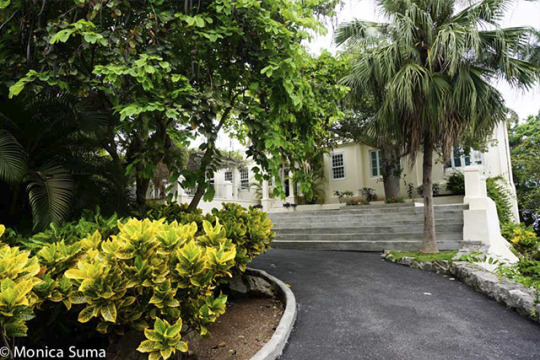
Finca Vigia & Ernest Hemingway
Ernest Hemingway, the American novelist and journalist, fell in love with Cuba the moment he stepped foot on shore. He built his house there, enjoyed many a day fishing Marlin, wrote some of this most celebrated novels on the island, and formed an everlasting bond with the Cuban people. Hemingway left quite a legacy in his beloved country after his death. To this day, his image can be seen throughout Cuba just as much as the country’s own historic icons and leaders.
In 1928, Hemingway set sail from his home in Key West on a voyage towards Spain. He took with him his wife Pauline, their two sons and Pauline’s sister Jinny. Partway through their trip they needed to make a layover in Havana, Cuba, this was Hemingway’s first time seeing this colourful country. The family stayed in the Hotel Ambos Mundos for three days. Which was more than enough time for Hemingway to fall madly in love with Cuba.
However, it was another 4 years later that Hemingway stepped foot on the island again. In 1932, Hemingway brought two of his close friends to Cuba on the legendary ship “Anita”, to join in the annual Marlin run. Also onboard was Hemingway’s hired help and Cuban friend Carlos Gutierrez. Carlos was a master Marlin fisherman, and he taught Hemingway how to correctly rig the baits to catch fish at different depths.
Hemingway loved the experience so much, he purchased a new boat, the “Pilar”, and came back the very next year with Carlos Gutierrez to fish in the Marlin run. In 1933 Hemingway wrote an article for Esquire Magazine entitled “Marlin off the Morro: A Cuban letter”, talking all about the things he has experienced during this time.
Over the next few years, Hemingway and his wife Pauline began to have marital problems, and in 1940, following his earlier divorce, Hemingway moved to Cuba with his new wife Martha. The two purchased a house just outside of Cuba’s capital Havana for an impressive $12,500 USD. They named the grand property Finca Vigia, or ‘lookout house’ and lived there happily with their many cats for 20 years. During his time at Finca Vigia, Hemingway wrote two of his greatest novels, For Whom The Bell Tolls and The Old Man And The Sea.
Hemingway became a celebrated member of the Cuban society as he stayed put in his home long after the relations between Cuba and the United States began to crumble. He fished almost daily from his favourite boat the “Pilar”, he hung out with the locals in his favourite bars in Havana, La Bodeguita del Medio and La Floridita, and he reported on the war in Cuba with a totally unbiased view. As a final act of alliance to the Cubans, Hemingway requested the Cuban government help him repurpose his precious “Pilar” as a fighting ship, so he could ambush German submarines off the coast of Cuba.
Memory of Ernest Hemingway
In 1961, after Hemingway’s death, his wonderful home was taken over by the Cuban government, despite the refusal of his wife Mary. Not long after this repossession, the government quickly forgot about Hemingway’s beloved home, and the property quickly fell into ruin. However, in recent years, the house has been taken in and restored by the Cubans, and can now be visited by the public throughout the year. Here you can see Hemingway’s many fishing memorabilia, hunting trophies, personal artefacts and his grand library. The home/museum is on both the World Monuments Fund list of the 100 Most Endangered Sites, and The National Trust for Historic Preservation’s 11 Most Endangered Places list.
0 notes
Photo

Finca Vigia & Ernest Hemingway
Ernest Hemingway, the American novelist and journalist, fell in love with Cuba the moment he stepped foot on shore. He built his house there, enjoyed many a day fishing Marlin, wrote some of this most celebrated novels on the island, and formed an everlasting bond with the Cuban people. Hemingway left quite a legacy in his beloved country after his death. To this day, his image can be seen throughout Cuba just as much as the country’s own historic icons and leaders.
In 1928, Hemingway set sail from his home in Key West on a voyage towards Spain. He took with him his wife Pauline, their two sons and Pauline’s sister Jinny. Partway through their trip they needed to make a layover in Havana, Cuba, this was Hemingway’s first time seeing this colourful country. The family stayed in the Hotel Ambos Mundos for three days. Which was more than enough time for Hemingway to fall madly in love with Cuba.
However, it was another 4 years later that Hemingway stepped foot on the island again. In 1932, Hemingway brought two of his close friends to Cuba on the legendary ship “Anita”, to join in the annual Marlin run. Also onboard was Hemingway’s hired help and Cuban friend Carlos Gutierrez. Carlos was a master Marlin fisherman, and he taught Hemingway how to correctly rig the baits to catch fish at different depths.
Hemingway loved the experience so much, he purchased a new boat, the “Pilar”, and came back the very next year with Carlos Gutierrez to fish in the Marlin run. In 1933 Hemingway wrote an article for Esquire Magazine entitled “Marlin off the Morro: A Cuban letter”, talking all about the things he has experienced during this time.
Over the next few years, Hemingway and his wife Pauline began to have marital problems, and in 1940, following his earlier divorce, Hemingway moved to Cuba with his new wife Martha. The two purchased a house just outside of Cuba’s capital Havana for an impressive $12,500 USD. They named the grand property Finca Vigia, or ‘lookout house’ and lived there happily with their many cats for 20 years. During his time at Finca Vigia, Hemingway wrote two of his greatest novels, For Whom The Bell Tolls and The Old Man And The Sea.
Hemingway became a celebrated member of the Cuban society as he stayed put in his home long after the relations between Cuba and the United States began to crumble. He fished almost daily from his favourite boat the “Pilar”, he hung out with the locals in his favourite bars in Havana, La Bodeguita del Medio and La Floridita, and he reported on the war in Cuba with a totally unbiased view. As a final act of alliance to the Cubans, Hemingway requested the Cuban government help him repurpose his precious “Pilar” as a fighting ship, so he could ambush German submarines off the coast of Cuba.
Memory of Ernest Hemingway
In 1961, after Hemingway’s death, his wonderful home was taken over by the Cuban government, despite the refusal of his wife Mary. Not long after this repossession, the government quickly forgot about Hemingway’s beloved home, and the property quickly fell into ruin. However, in recent years, the house has been taken in and restored by the Cubans, and can now be visited by the public throughout the year. Here you can see Hemingway’s many fishing memorabilia, hunting trophies, personal artefacts and his grand library. The home/museum is on both the World Monuments Fund list of the 100 Most Endangered Sites, and The National Trust for Historic Preservation’s 11 Most Endangered Places list.
0 notes
Photo

Finca Vigia & Ernest Hemingway
Ernest Hemingway, the American novelist and journalist, fell in love with Cuba the moment he stepped foot on shore. He built his house there, enjoyed many a day fishing Marlin, wrote some of this most celebrated novels on the island, and formed an everlasting bond with the Cuban people. Hemingway left quite a legacy in his beloved country after his death. To this day, his image can be seen throughout Cuba just as much as the country’s own historic icons and leaders.
In 1928, Hemingway set sail from his home in Key West on a voyage towards Spain. He took with him his wife Pauline, their two sons and Pauline’s sister Jinny. Partway through their trip they needed to make a layover in Havana, Cuba, this was Hemingway’s first time seeing this colourful country. The family stayed in the Hotel Ambos Mundos for three days. Which was more than enough time for Hemingway to fall madly in love with Cuba.
However, it was another 4 years later that Hemingway stepped foot on the island again. In 1932, Hemingway brought two of his close friends to Cuba on the legendary ship “Anita”, to join in the annual Marlin run. Also onboard was Hemingway’s hired help and Cuban friend Carlos Gutierrez. Carlos was a master Marlin fisherman, and he taught Hemingway how to correctly rig the baits to catch fish at different depths.
Hemingway loved the experience so much, he purchased a new boat, the “Pilar”, and came back the very next year with Carlos Gutierrez to fish in the Marlin run. In 1933 Hemingway wrote an article for Esquire Magazine entitled “Marlin off the Morro: A Cuban letter”, talking all about the things he has experienced during this time.
Over the next few years, Hemingway and his wife Pauline began to have marital problems, and in 1940, following his earlier divorce, Hemingway moved to Cuba with his new wife Martha. The two purchased a house just outside of Cuba’s capital Havana for an impressive $12,500 USD. They named the grand property Finca Vigia, or ‘lookout house’ and lived there happily with their many cats for 20 years. During his time at Finca Vigia, Hemingway wrote two of his greatest novels, For Whom The Bell Tolls and The Old Man And The Sea.
Hemingway became a celebrated member of the Cuban society as he stayed put in his home long after the relations between Cuba and the United States began to crumble. He fished almost daily from his favourite boat the “Pilar”, he hung out with the locals in his favourite bars in Havana, La Bodeguita del Medio and La Floridita, and he reported on the war in Cuba with a totally unbiased view. As a final act of alliance to the Cubans, Hemingway requested the Cuban government help him repurpose his precious “Pilar” as a fighting ship, so he could ambush German submarines off the coast of Cuba.
Memory of Ernest Hemingway
In 1961, after Hemingway’s death, his wonderful home was taken over by the Cuban government, despite the refusal of his wife Mary. Not long after this repossession, the government quickly forgot about Hemingway’s beloved home, and the property quickly fell into ruin. However, in recent years, the house has been taken in and restored by the Cubans, and can now be visited by the public throughout the year. Here you can see Hemingway’s many fishing memorabilia, hunting trophies, personal artefacts and his grand library. The home/museum is on both the World Monuments Fund list of the 100 Most Endangered Sites, and The National Trust for Historic Preservation’s 11 Most Endangered Places list.
0 notes